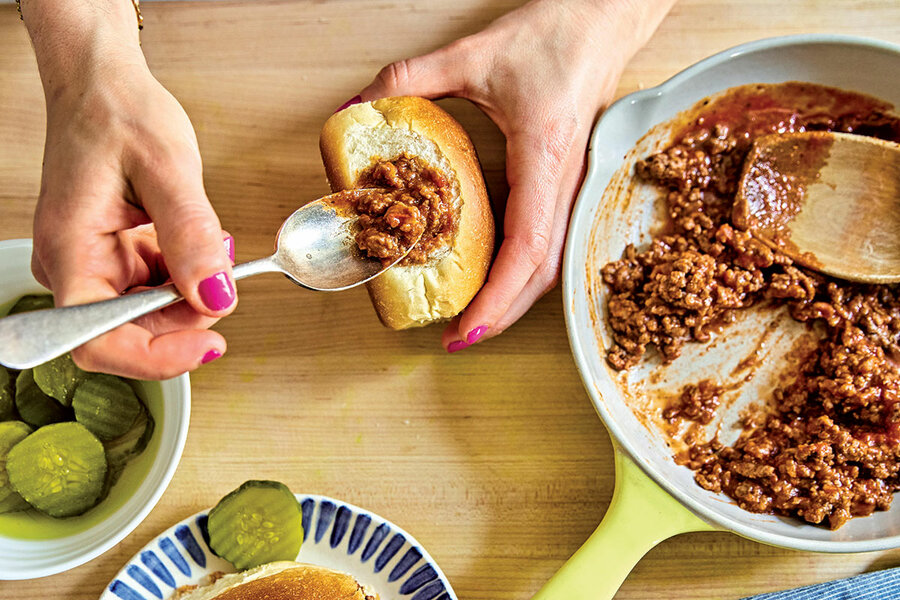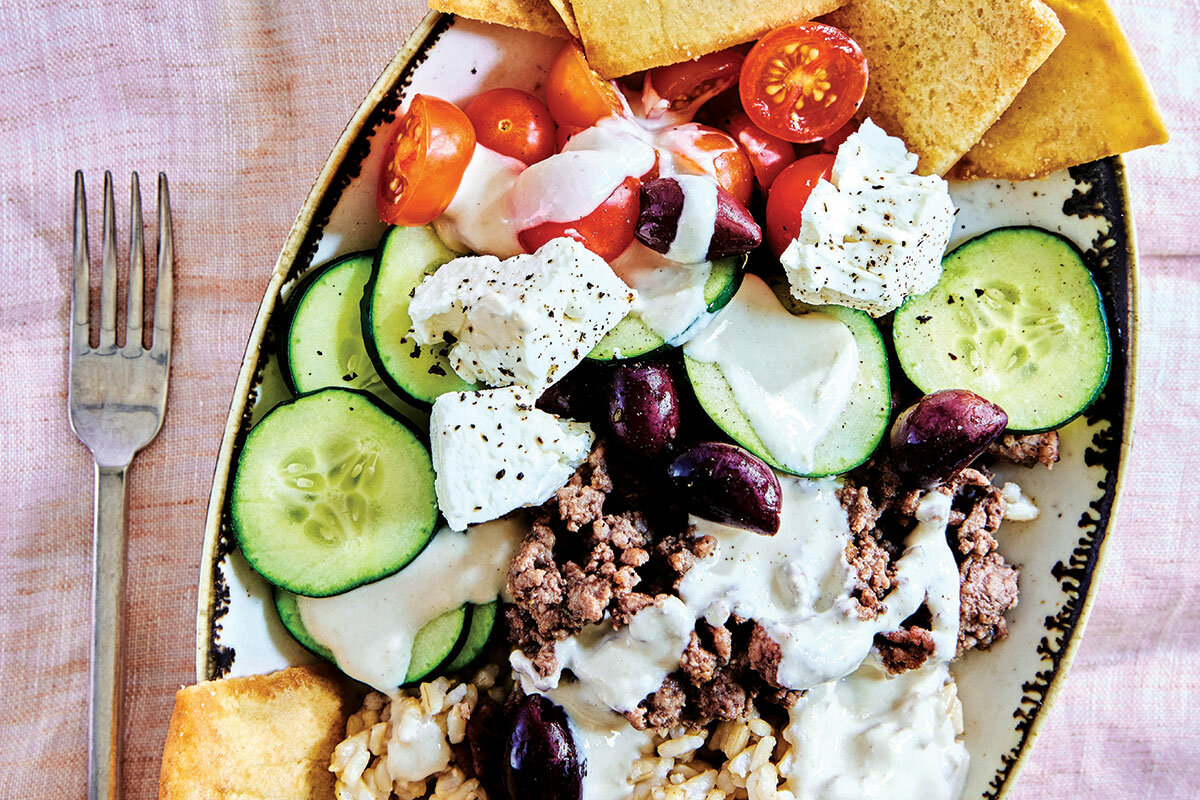Amy Palanjian on feeding kids and laughing more at the dinner table
Loading...
Many nights, dinner at our house is a circus: frantic scrambles to get food on the table, kids spilling milk and laughing hysterically at potty humor, a toddler who prefers tearing through the house to sitting at the table. It’s peak chaos. In search of some calm, I spoke with “Yummy Toddler Food” blogger Amy Palanjian, author of “Dinnertime SOS: 100 Sanity-Saving Meals Parents and Kids of All Ages Will Actually Want To Eat.” It’s packed with doable dinner ideas like Mediterranean hummus bowls, sloppy Joe sandwich pockets, and breakfast-for-dinner skillets. It also offers practical advice on meal rotations, food waste, and what to do when kids won’t eat. I spoke with Ms. Palanjian about the experiences that informed her book, how she packs lunches, and the groundhog that’s frequently a topic of their dinner conversation. This conversation has been lightly edited.
Q: One of the things I appreciate most about “Dinnertime SOS” is that it’s so relatable, and it’s clearly written by someone who has kids and has experienced the dinnertime scramble, cooking with a clingy toddler on the hip and all. Can you tell us what a regular weeknight looks like in your house and how that informed this book?
Life with kids comes in phases, and at the time I was developing recipes for this book, my son was 1 1/2 to 3, and at that time of the day, my older kids were just getting home from school and activities, and he needed attention because he was starting to get tired. All of the things I was hearing about how to pull out dinner didn’t apply because the logistics of cooking when you have that high-need phase changes the dynamics of everything. I think that was the driving purpose of this, just to be realistic in knowing that parents, or even a busy person who doesn’t have kids, they’re not cooking in a vacuum. They’re cooking often through a lot of chaos, and they may not be at their peak energy, or patience level, or bandwidth, so I am really trying to meet people where they are at that time of day.
Q: What was your motivation for writing this book?
I feel like I have a lot of books that are about feeding families, but I felt like that context was missing. A lot of recipes claim to be easy, and then you have to chop two onions, mince four cloves of garlic, and that was not gonna happen. Around the time I had my third child, I was able to give myself permission to start taking shortcuts that I felt guilty about doing previously. I started buying salad kits, jarred marinara, and tikka masala simmer sauce. I had to be in the trenches of parenting long enough to get to the place where I was like, “Oh, there are other, easier ways to do this.” We are surrounded by images on social media of people doing a lot of things from scratch, so there can be this inherent guilt. I wanted to give people full permission to do whatever you need to do with the goal of feeding your family. The feeding your family part, that’s important. The way in which you get there can vary.
Q: How would you describe your philosophy on feeding kids and helping everyone – kids and parents – enjoy food and mealtimes more?
My main goal is to help families enjoy their time at the table. We can get stuck on counting grams of things and counting bites, and really lose focus on the people in front of us. I try to help people remember that the dynamics of the meal are just as important. Laughing with your kids over dinner is just as important as what everyone eats. The more you can zoom out and trust their hunger, the easier things can be.
Q: Dinnertime with young kids is notoriously difficult – toddlers who won’t sit, picky eaters, tired parents. What’s one thing families can do to make dinner easier, more pleasant?
Remind yourself that you don’t actually have to cook it – you can have sandwiches, assemble hummus and pita and cucumbers; you can have pancakes for dinner. When I’m thinking about the part of dinner that’s stressful to me, I see if there’s a thing I can buy at the store to replace it. Like if you want your kids to learn to love salad and you regularly do not serve salad because you do not make dressing but you feel like you should, buy it from the store.
Q: Here’s a scenario: I just got back from school pickup, and I need an SOS recipe I can get on the table quickly in between monitoring work messages, helping kids with homework, and keeping a hungry toddler entertained. I usually have eggs, canned beans, onions, rice, and pantry staples, but I don’t want to do a ton of chopping and stirring. What can I make?
We have been in a very big phase of burrito bowls: rice, canned beans, shredded cheese, lettuce, salsa, plain yogurt or sour cream. Put everything on the table; everyone decides what goes into their own plate. It’s like Chipotle but on your own counter. Sometimes if we have tortilla chips, we will crumble that on top. We also do a lot of breakfast tacos, so like scrambled eggs with tortillas and salsa and cheese.
Q: Schools have reopened, and I know from experience that packing lunches can be overwhelming for a lot of parents. What are some ways to make it less daunting?
You have full permission to make it as easy as possible. Using leftovers you already have is hugely helpful. Don’t be worried if you rely on the same lunches. Especially at the start of the school year, there’s so much going on; kids might want and need that comfort/safety food, things that are easy for them to eat, that are familiar. I would not stress about variety or exposure during lunch. Make sure you’re packing food that’s easy to open and eat because lunch periods are so short. Today my daughter had spaghetti in a thermos, a frozen yogurt pouch that will thaw by lunch, and a juice box. Really simple.
Q: You tend to emphasize dinnertime conversation rather than focusing too much on the food. Do you have any fun conversation starters or games you do with your kiddos?
So we sometimes tell jokes. We often do a circle story: I will start a story, give two sentences, then pass to the person next to me. Make up a story around the table with each person adding something. That always ends up very funny. Sometimes we do highs and lows, where we share a little bit about our day. Sometimes we talk about the groundhog that lives in our backyard – there’s a running debate on what its name is.







